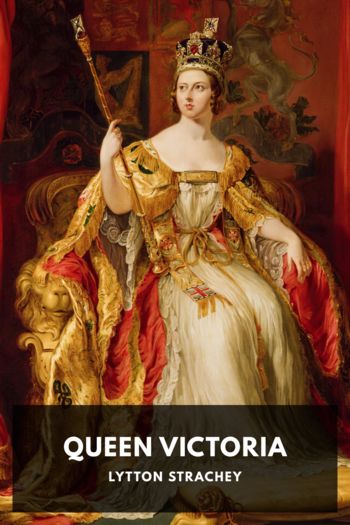Queen Victoria, Lytton Strachey [best books for 8th graders .TXT] 📗

- Author: Lytton Strachey
Book online «Queen Victoria, Lytton Strachey [best books for 8th graders .TXT] 📗». Author Lytton Strachey
Only one thing more was needed: material expression must be given to the new ideals and the new forces so that they might stand revealed, in visible glory, before the eyes of an astonished world. It was for Albert to supply this want. He mused, and was inspired: the Great Exhibition came into his head.
Without consulting anyone, he thought out the details of his conception with the minutest care. There had been exhibitions before in the world, but this should surpass them all. It should contain specimens of what every country could produce in raw materials, in machinery and mechanical inventions, in manufactures, and in the applied and plastic arts. It should not be merely useful and ornamental; it should teach a high moral lesson. It should be an international monument to those supreme blessings of civilisation—peace, progress, and prosperity. For some time past the Prince had been devoting much of his attention to the problems of commerce and industry. He had a taste for machinery of every kind, and his sharp eye had more than once detected, with the precision of an expert, a missing cogwheel in some vast and complicated engine.215 A visit to Liverpool, where he opened the Albert Dock, impressed upon his mind the immensity of modern industrial forces, though in a letter to Victoria describing his experiences, he was careful to retain his customary lightness of touch. “As I write,” he playfully remarked, “you will be making your evening toilette, and not be ready in time for dinner. I must set about the same task, and not, let me hope, with the same result … The loyalty and enthusiasm of the inhabitants are great; but the heat is greater still. I am satisfied that if the population of Liverpool had been weighed this morning, and were to be weighed again now, they would be found many degrees lighter. The docks are wonderful, and the mass of shipping incredible.”216 In art and science he had been deeply interested since boyhood; his reform of the household had put his talent for organisation beyond a doubt; and thus from every point of view the Prince was well qualified for his task. Having matured his plans, he summoned a small committee and laid an outline of his scheme before it. The committee approved, and the great undertaking was set on foot without delay.217
Two years, however, passed before it was completed. For two years the Prince laboured with extraordinary and incessant energy. At first all went smoothly. The leading manufacturers warmly took up the idea; the colonies and the East India Company were sympathetic; the great foreign nations were eager to send in their contributions; the powerful support of Sir Robert Peel was obtained, and the use of a site in Hyde Park, selected by the Prince, was sanctioned by the Government. Out of 234 plans for the exhibition building, the Prince chose that of Joseph Paxton, famous as a designer of gigantic conservatories; and the work was on the point of being put in hand when a series of unexpected difficulties arose. Opposition to the whole scheme, which had long been smouldering in various quarters, suddenly burst forth. There was an outcry, headed by The Times, against the use of the park for the exhibition; for a moment it seemed as if the building would be relegated to a suburb; but, after a fierce debate in the House, the supporters of the site in the Park won the day. Then it appeared that the project lacked a sufficient financial backing; but this obstacle, too, was surmounted, and eventually £200,000 was subscribed as a guarantee fund. The enormous glass edifice rose higher and higher, covering acres and enclosing towering elm trees beneath its roof: and then the fury of its enemies reached a climax. The fashionable, the cautious, the Protectionists, the pious, all joined in the hue and cry. It was pointed out that the Exhibition would serve as a rallying point for all the ruffians in England, for all the malcontents in Europe; and that on the day of its opening there would certainly be a riot and probably a revolution. It was asserted that the glass roof was porous, and that the droppings of fifty million sparrows would utterly destroy every object beneath it. Agitated nonconformists declared that the Exhibition was an arrogant and wicked enterprise which would infallibly bring down God’s punishment upon the nation. Colonel Sibthorpe, in the debate on the Address, prayed that hail and lightning





Comments (0)